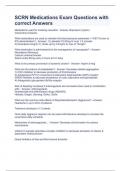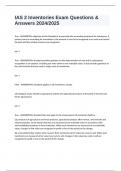Summary
Summary Organizing and Managing Patient Flows (HPI4010)
- Course
- Institution
Summary of the course Organizing and Managing Patient Flows (HPI4010) of the mater Healthcare Policy, Innovation and Management. All learning goals, (video)lectures and mind maps. Resulted in an 8.1. Used literature can be found on the first pages of the document: this will largely accord with thi...
[Show more]












